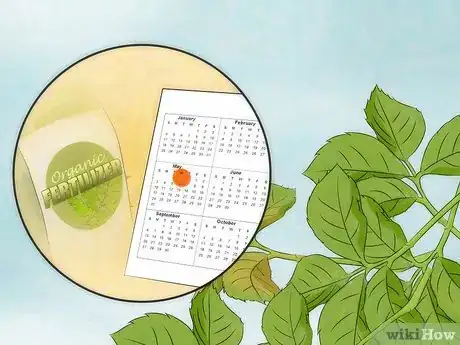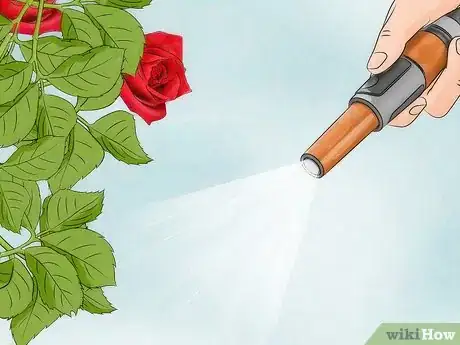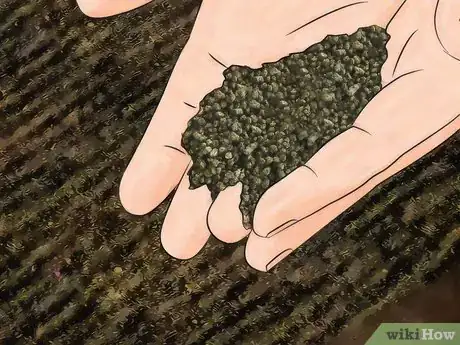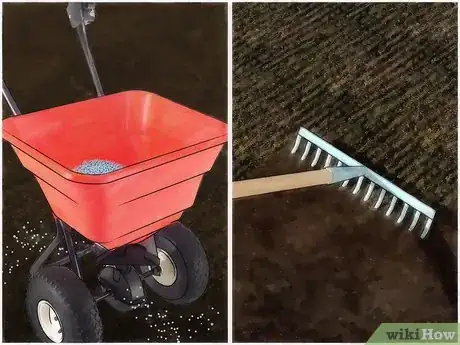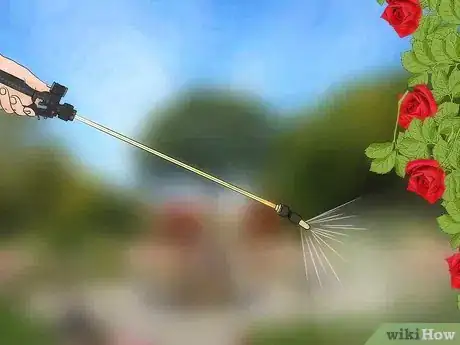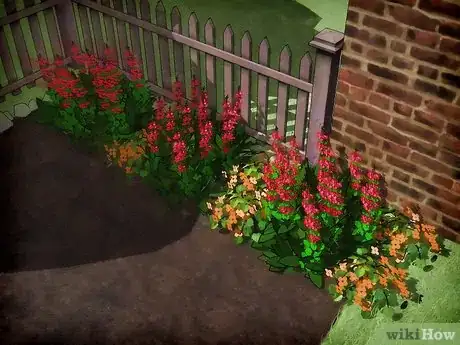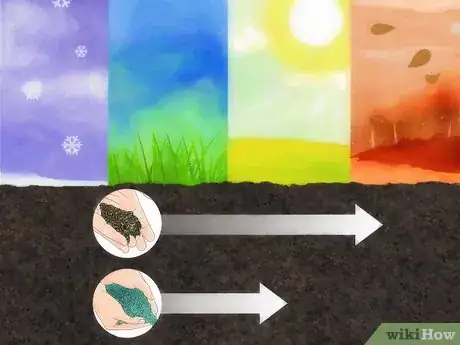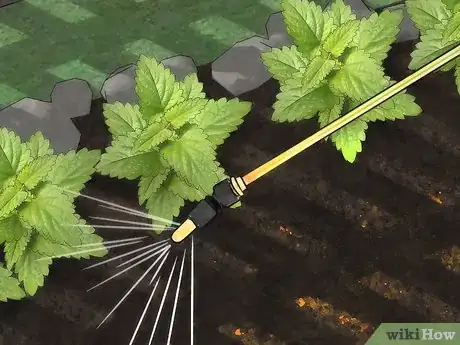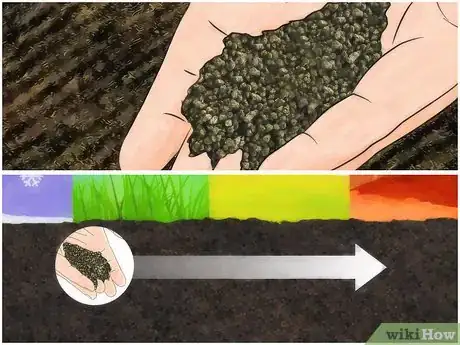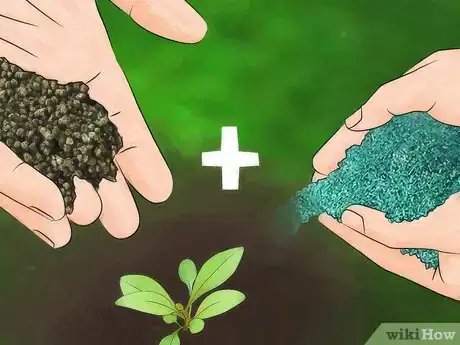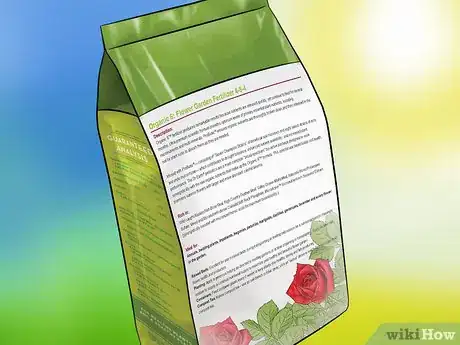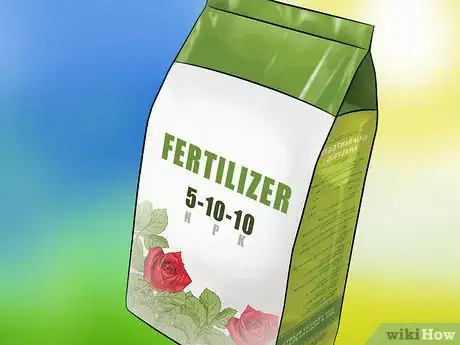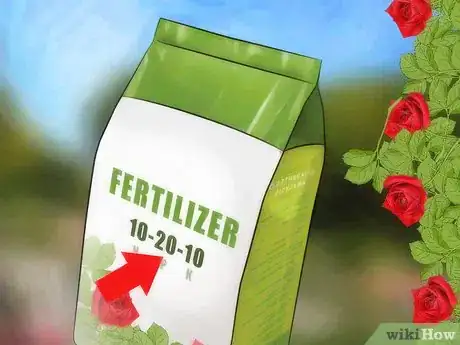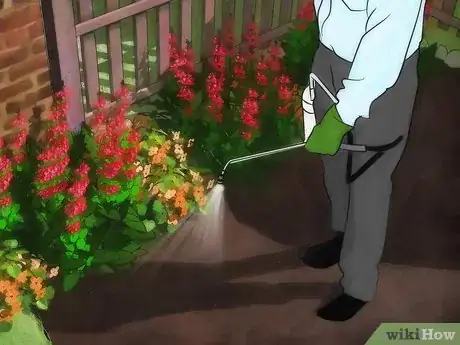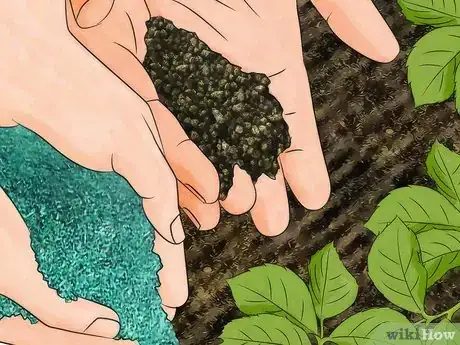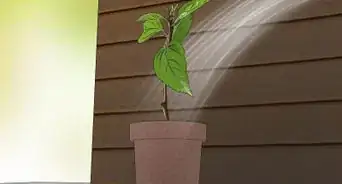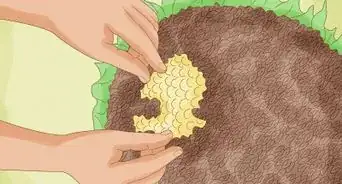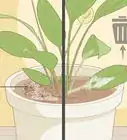This article was co-authored by Katie Gohmann. Katherine Gohmann is a Professional Gardener in Texas. She has been a home gardener and professional gardener since 2008.
This article has been viewed 138,817 times.
Flowering plants can be the pride and joy of any garden. But as any gardener knows, to get the beautiful results you seek, your flowers require a fertilizer boost. Whether you select a fast-working synthetic fertilizer, or a more natural organic fertilizer, you’ll need to determine when you apply it, how to apply it, and what other specific needs your plants have. You may need to undergo some trial and error, or even ask for advice. No matter what, your flowers will be much lovelier after they are properly fertilized.
Steps
Applying Fertilizer to Your Flowers
-
1Determine when to fertilize. The type of flower you wish to fertilize, whether it is an annual or perennial, and whether it is new growth or an established plant will all play a role in determining when you need to fertilize. Determine the best time to fertilize your specific flowering plants.
- Fertilize the soil for annuals, as well as any new planting, during bed preparation.
- Fertilize established perennials and ornamental grasses as soon as their growth resumes in the spring.
- Bulbs need fertilizing as soon as growth appears.
- Roses need fertilizing beginning in May but not after July. You do not want to encourage new growth as fall and winter approach.
-
2Water your plants. Before fertilizing, you should water your flowers the way you normally do. It is important for your flowers to get a nice drink before they have been fertilized, but there is no need to overdo it.
- The soil should be a little damp when you apply fertilizer. Dry roots can be susceptible to fertilizer burn.
Advertisement -
3Add natural fertilizers to soil surface. The simplest way to apply natural fertilizers is to spread them on the soil surface of your planting beds. Natural fertilizers take a much longer time to break down and release their nutrients available into the soil, so it is a good idea to apply them at least a few months before planting, if possible.[1]
-
4Apply granular fertilizer to your soil. Granular fertilizers are applied by sprinkling directly onto soil, or by using a spreader. You will want to turn over the soil with a rake to create an even distribution of granules. Granular fertilizers are longer lasting. They can remain in your soil for up to 9 months.
-
5Administer liquid or water-soluble fertilizer to your plants and soil. Water-soluble fertilizers are made of a type of powder that dissolves in water. Either of these fertilizers can be applied to your flowers. They can be sprayed directly onto the plants and soil. Water-soluble fertilizers remain in the soil for 2-3 weeks.
-
6Pay extra attention to your annuals. Annual flowers (those that complete their life cycle in one growing season) tend to need more fertilizer than perennial flowers (which return again each year.)
Choosing Between Natural and Synthetic Fertilizers
-
1Evaluate different forms. The first step will be deciding if you will use a natural fertilizer or a synthetic one. There are some benefits to each.[2]
- Natural fertilizers are composed of organic material. Examples include compost (homemade or store-bought), manure, cottonseed meal, blood meal, bone meal, fish emulsion, liquid seaweed, milk, and molasses.[3]
- Synthetic fertilizers come in a variety of forms, such as granules, water-soluble powders, and liquid concentrates.
-
2Weigh the short-term versus long-term costs. Purchasing natural fertilizer (as opposed to generating your own compost) can be cost prohibitive. A similar quantity of synthetic fertilizer may potentially cost less. However, natural fertilizers will release more nutrients slowly over time, nourishing your plants for longer and improving the quality of your soil over time. [4]
-
3Choose synthetic fertilizers for fast results. Within a day of applying a synthetic fertilizer (particularly a water-soluble variety) you will see dramatic results. This may be the right choice for you if your plants need an immediate pick-me-up.
-
4Select natural fertilizers to improve soil quality. Natural fertilizers work slowly because they are improving the quality of your soil from the inside out. Rather than merely providing nutrients directly to the plant, they also provide nutrients that will remain in the soil. Natural fertilizers can improve the quality of your soil, meaning that you will ultimately need fertilizers less frequently.[5]
-
5Consider using a combination of natural and synthetic fertilizers. Natural fertilizers are much better for your soil over time, but they are much slower to release. One option is to use a natural fertilizer as your primary fertilizer, but to also give your plants the occasional boost with a water-soluble synthetic fertilizer.
Selecting the Right Product
-
1Read labels. If you are purchasing store-bought fertilizer, be sure to read the label carefully. You should look for a fertilizer product clearly designated for use with flowers (or flowering plants). If you mean to fertilize a specific flower (e.g., roses) you may even be able to locate a product designed for that flower.
-
2Look for N-P-K. The best fertilizers for flowers contain nitrogen (N), which promotes growth; phosphorus (P), which enhances root systems and flower production; and potassium (K), which improves overall vigor and disease resistance). A package of fertilizer will generally have a three-part number (e.g., 5-10-10) that indicated the percentage of each of these macronutrients per volume.
-
3Choose phosphorous for flowers. Plants that are known for their prolific flowering abilities will generally need more phosphorous. This is the middle number is most fertilizers. A 10-20-10 will contain a higher dose of phosphorous to help nourish your flowering plants.
-
4Consult an expert. It never hurts to speak to someone in your region about what fertilizer they recommend. This can help save you time and money. Consider speaking to a local gardener, someone from a landscaping company, or a representative at your garden supply store. [6]
-
5Expect some trial and error. They only way to truly determine what your flowers will respond to is to give something a try. You may need to experiment with several different options or combinations before you find the perfect fertilizer for your flowering plants.[7]
Community Q&A
-
QuestionWhat fertilizer should I use for an amaryllis (red lion)?
 Community AnswerWhen you are first planting the bulb, you can add a scoop or bone meal, or general purpose bulb fertilizer the soil. Mix well; you do not want to fertilizer in direct contact to the bulb.
Community AnswerWhen you are first planting the bulb, you can add a scoop or bone meal, or general purpose bulb fertilizer the soil. Mix well; you do not want to fertilizer in direct contact to the bulb. -
QuestionShould I use a blooming fertilizer mix for orchids?
 Community AnswerYes.
Community AnswerYes. -
QuestionWhich fertilizer should I use to make my plant flower?
 Community AnswerYou can buy a general-use "flowering plant" fertilizer at home and garden centers, or you can look for one specifically formulated for your plant. Some plants that have special fertilizers are roses, bougainvillea, azalea, and orchid. When in doubt, a good top-dressing of compost is always a good idea.
Community AnswerYou can buy a general-use "flowering plant" fertilizer at home and garden centers, or you can look for one specifically formulated for your plant. Some plants that have special fertilizers are roses, bougainvillea, azalea, and orchid. When in doubt, a good top-dressing of compost is always a good idea.
Warnings
- Do not use a fertilizer with a higher percentage of nitrogen than potassium. You want your flowers to focus on blooming rather than vegetation. A higher nitrogen level is better used for growing vegetables.⧼thumbs_response⧽
Things You'll Need
- Fertilizer
- Water
References
- ↑ http://garden.org/ediblelandscaping/?page=organic-fertilizers
- ↑ http://www.dummies.com/how-to/content/how-and-what-to-feed-flowers.html
- ↑ http://www.motherearthnews.com/organic-gardening/milk-and-molasses-magic-zbcz1402
- ↑ http://garden.org/ediblelandscaping/?page=organic-fertilizers
- ↑ http://garden.org/ediblelandscaping/?page=organic-fertilizers
- ↑ http://garden.org/ediblelandscaping/?page=organic-fertilizers
- ↑ http://www.dummies.com/how-to/content/how-and-what-to-feed-flowers.html
About This Article
Fertilizing your flowers can give them a nutrients boost and help them grow faster and healthier. Choose a natural or synthetic 10-20-10 fertilizer that contains nitrogen, phosphorous, and potassium. Fertilize your soil before you plant flowers or when their growth resumes for the spring. Make sure you water the soil before sprinkling the fertilizer on top to help your flowers absorb it. Alternatively, use a water-soluble fertilizer, which you can dissolve into water and spray directly onto your soil. For more tips from our Gardening co-author, including how to test your soil, read on!
